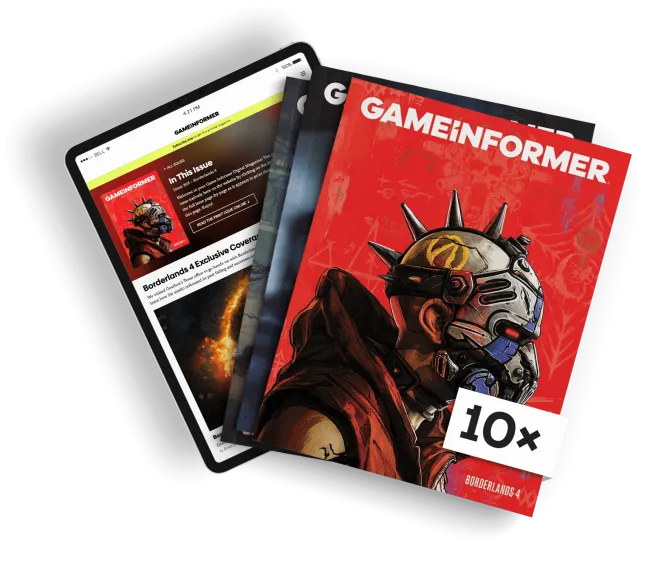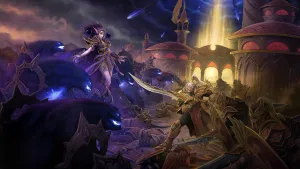
The Easiest Way To Make Modern Games Better
I understand why it happens. After I’ve been waiting for months to try out that new game, my download finishes and the title screen appears. When given the selection between “New Game” and “Options,” the choice to dive in is hard to look past. Even when some newer games open with an abbreviated choice to tweak core selections before even starting, I sometimes blithely hold down the “Accept” button until that first cinematic starts to play. But I’ve started to change my tune and take those extra minutes to peruse, and I’m here to tell you: so should you.
Even a few years ago, my advice might have been different. At that point, I rarely felt the need to tweak my audio mix or adjust subtitle choices straight out of the gate. However, the Options menu of many modern games is one of the easiest ways to ensure that any given game will be fun. So much of how a given release will look, sound, and play is on rails and unchangeable, but newer games increasingly give us more flexibility. As the ability to tweak your experience has grown, many of us haven’t taken advantage of the opportunity.
I used to be a proponent of the idea that we should play the game “the way the developer intended.” I still think there’s some merit to the idea that a developer’s authorship is foundational to understanding the quality and feel of a given game, and it’s worth trying to understand that. But as the years pass, I’ve also increasingly come to recognize that games are unique from other entertainment like film or books. By their nature, a portion of a game’s authorship is reserved for you as its player. Where does the character onscreen go? Who do they talk to? Which upgrades do they select? Games are fundamentally interactive, so I increasingly feel like deeper engagement with determining how a game plays should fall, in part, to the players themselves.
All of us who play games have many reasons to thank advocates of the gaming accessibility movement. As individuals and groups rallied to encourage studios to include options for gamers with visual, auditory, or physical disabilities, we’ve seen a wave of new standards enter many new game releases. And while those changes undoubtedly help those communities enjoy the hobby, the rest of the gaming world can also reap the benefits. Even without any specific disabilities, adjusting a game experience to suit your preferences can often transform a given release into something more enjoyable.
In my recent game playthroughs, Assassin’s Creed Shadows is notable. Beyond a core difficulty slider, Canon Mode lets me tweak my narrative, allowing freedom to choose dialogue or see the intended plot its developers liked best. An Immersive Mode allows me to feel more enmeshed in the location with local languages, or to stick with English. And while the developers may recommend guided exploration remain off, it only took me a couple of hours of play to recognize that the game was far more enjoyable to me without the slower-paced scouting mechanic that came with leaving it off; by turning on guided exploration, I was better able to enjoy the combat, narrative, and traversal that I really wanted out of an AC game.
Ubisoft’s latest open-world epic is only one of many making headway through increased options. Shooters like Overwatch may allow color tweaking for those with particular forms of blindness or other visual impairment, but I’ve spoken with multiple players and streamers who use those color tweaking selections to make for easier, quicker reads of a busy and fast-moving battlefield. Games like Destiny 2 allow for essential tweaks to Bungie’s already impressive aiming options, camera stick movement, and visual field of view.
Recent narrative-focused RPGs like Dragon Age: The Veilguard offer robust options for tweaking difficulty; for many, challenging combat might be what they’re looking for in a title like Elden Ring, but in a party-based fantasy RPG, storytelling might be the driving interest. Likewise, I’ve always been a particular fan of Supergiant Games’ approach to God Mode in Hades and its sequel – the graduated damage resistance it provides upon each death weaves together with the narrative of a godlike protagonist who is gradually getting in touch with their divine nature – and has the side effect of bringing in new players who might otherwise be scared away by the rogue-lite structure of the game.
I love how these kinds of adjustments open up a game to newcomers or players with limited interest in combat systems, even if I don’t tend to employ most of those changes for myself. More players add up to more successful games.
I’m also pleased to see console games move more toward visual customization than in the past – a dynamic many PC gamers have taken for granted for years. In many modern games, the ability to select “Performance” over “Quality” is not an easy answer. Some players have a go-to approach on this front, but I’ve found that my personal taste varies case-by-case. Sometimes, the silky-smooth framerate wins out over greater lighting detail and other graphical flourishes, and sometimes it’s the other way around. I appreciate the chance to make that decision for myself.
Like with the broader gaming accessibility movement, we should all be cheering for these options in our games. Don’t care to dial down the difficulty on a challenging game, or adjust how hard it is to track objectives in that open-world adventure? That’s just fine. But it’s unavoidable that the games we love exist in a crowded and competitive marketplace. Suppose there’s a genre or franchise you love. In that case, it’s to your benefit to find a game with a wide array of ways to customize your experience because that, in turn, makes it more likely that more people will buy and play, thus ensuring the continued existence of the thing you enjoy. And as someone who used to leave most of those options menus untweaked and has since learned better, I can say with authority – you might be missing out on one of the easiest ways to make your gaming hobby far more fun.

Get the Game Informer Print Edition!
Explore your favorite games in premium print format, delivered to your door.
- 10 issues per year
- Only $4.80 per issue
- Full digital magazine archive access
- Since 1991









